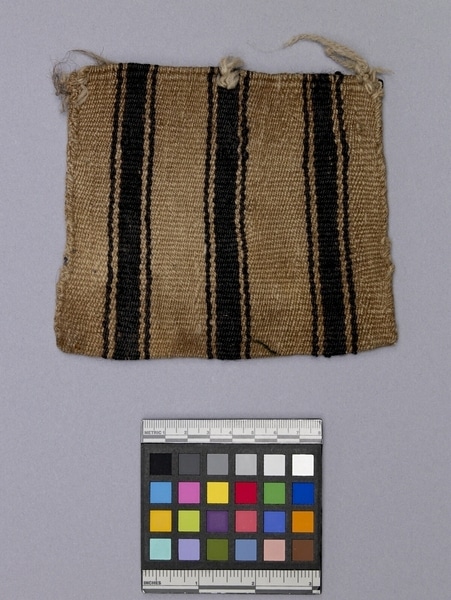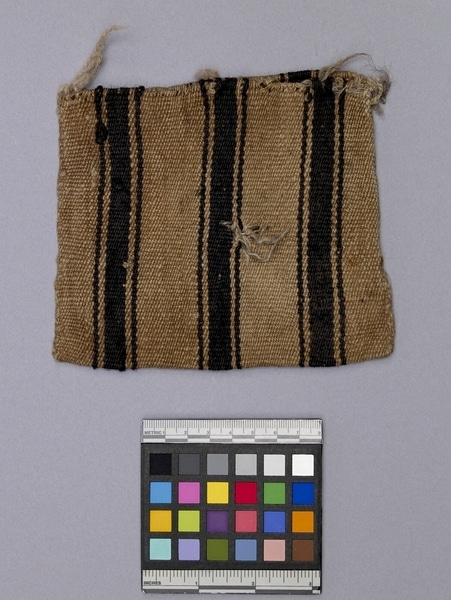Bag Item Number: Sf1170 from the MOA: University of British Columbia


Description
Square, brown and black striped bag constructed from one piece of warp-faced plain weave. Constructed by folding in half lengthwise and sewing side edges together. Hole in the middle of one face now stitched with grey yarn; hole on the other side stitched with white thread. Several tufts of yarn stick out of area near the bag mouth. Strap is missing.
History Of Use
Warp-faced fabrics with three or four selvedges are woven by women on the indigenous style loom, a staked-out horizontal ground loom, or an adjustable tension (body) loom. The technique and structure have pre-Conquest antecedents, and as in ancient times, the fabrics are used in their rectangular form without cutting or shaping. Used for carrying food, like toasted wheat and corn, by young boys who herd sheep. This is a very traditional bag form throughout the Andes and extending back to ancient times.
Specific Techniques
Plain colour areas or stripes are warp-faced plain weave.
Cultural Context
Children; everyday.
Narrative
Made by Lucilia Huatta Cruz for her brother Esteban Huatta Cruz when they were both single. Used by him to carrying food when he herded sheep as a boy of 9 or 10.
Item History
- Made by Lucilia Huatta Cruz (Maker) in Taquile, Puno, Peru during 1977
- Collected by Elizabeth L. Johnson during 1984
- Owned by Esteban Huatta Cruz
- Owned by Elizabeth L. Johnson before June 13, 1984
- Received from Elizabeth L. Johnson (Seller) and Museum of Anthropology Shop Volunteers (Funding source) on June 13, 1984
What
Who
- Culture
- Quechua
- Creator
- Lucilia Huatta Cruz (Maker)
- Field Collector
- Elizabeth L. Johnson
- Previous Owner
- Esteban Huatta Cruz and Elizabeth L. Johnson
- Received from
- Elizabeth L. Johnson (Seller) and Museum of Anthropology Shop Volunteers (Funding source)
Where
- Holding Institution
- MOA: University of British Columbia
- Made in
- Taquile, Puno, Peru
When
- Creation Date
- during 1977
- Collection Date
- during 1984
- Ownership Date
- before June 13, 1984
- Acquisition Date
- on June 13, 1984
Other
- Item Classes
- textiles
- Condition
- fair
- Accession Number
- 0992/0030